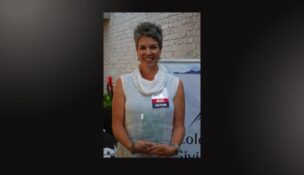JAB: Bridging the digital divide
The biggest CO company you've never heard of
Mike Taylor //February 3, 2015//


JAB: Bridging the digital divide
The biggest CO company you've never heard of
Mike Taylor //February 3, 2015//
With more than 750 employees and annual revenues topping $100 million, JAB Wireless Inc. might be the biggest Colorado company you’ve never heard of.
Founded in 2006, the Englewood-based firm has become the largest fixed-wireless broadband service provider in the country, with more than 175,000 customers in 15 states, including 35,000 customers in Colorado. Its primary services are high-speed Internet access and digital telephone, mainly in underserved rural and ex-urban areas.
Put simply, JAB is in the business of bridging the digital divide – that gap between the country’s high-speed Internet haves and have-nots.
JAB President and CEO Jack Koo describes the privately held company’s business model as a “donut strategy” that eschews major city centers and focuses on areas difficult for cable companies to serve profitably. “Broadband service is good in metropolitan Denver,” he explains, “but as you get into the fringes of these networks, our competitors’ service capabilities get worse. That’s really our sweet spot.”
In Colorado, where the company operates under the name Skybeam, JAB’s footprint covers the I-25 corridor from Pueblo to Cheyenne. To the west, it serves the mountain communities along I-70.
“Probably the biggest advantage we have is that we don’t build a dedicated network like cable does,” says Koo, himself a cable industry veteran. “Our network footprint is defined one tower site at a time, so we don’t have the same ‘build it and hope they come’ mentality. We can focus our network investments where either demand or need is the highest, so we have a lot of selectivity with that. Not only is the technology considerably cheaper, it also can be managed much more capital-efficiently. That’s really why we are so much better suited to serve rural America.”
Koo points out that DSL still has about a 50 percent market share in rural America, but he says, “That’s diminishing every single day. DSL faces the same challenges as cable does in trying to upgrade its networks and edge out its footprint, in that they need to have fiber deeper and deeper into their network to increase their capacities.”
Koo has a long history in telecommunications, having previously co-founded FrontierVision Partners, a consolidator of cable TV operators acquired by Adelphia for $2.1 billion in 1999.
As with FrontierVision’s cable business model, most of JAB’s growth has come from consolidation; there are some 2,500 small wireless broadband operators around the country, and since 2006 JAB has acquired 105 of them.
“We buy them, we integrate them into our network, we consolidate their operations and then we upgrade their technical capabilities,” Koo says. “By way of an illustration, last spring we purchased an operator in Idaho that had 11,000 customers. That was the second-largest operator at the time, and we’re at 175,000 customers and growing.”
Koo says JAB – named for the first initials of a co-founder’s children – is well-positioned for continued growth with an “unlimited runway” from an M&A standpoint, and public policy that encourages bridging the digital divide. He says a convergence is taking place between the cellular and fixed-wireless industries to meet bandwidth needs, and JAB is poised to benefit.
“The good news is that we have a service that our customers have an almost insatiable desire for – more speed, more capacity,” Koo says. “The challenge is, how do you keep up with that? Since the inception of the company we’ve seen customer bandwidth usage increase 600 percent. That’s almost entirely driven by video streaming, which now represents 60 percent of all our traffic.
“There is going to be an enormous capital investment taking place as cellular tries to meet these demands,” Koo continues. “We’re talking about billions of dollars in R&D by AT&T, by Sprint, by Verizon. We’re going to be the beneficiaries of all those advances that take place as well.”

























